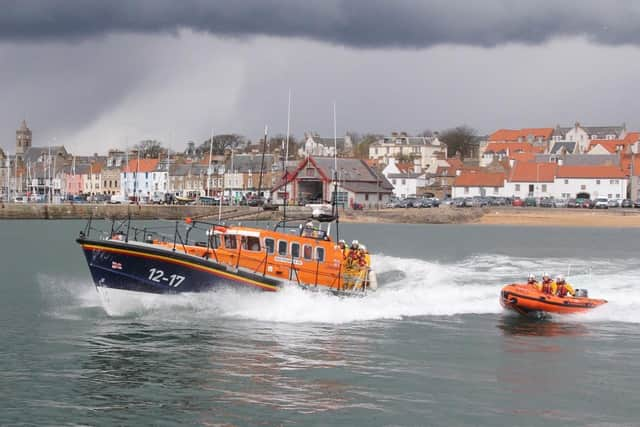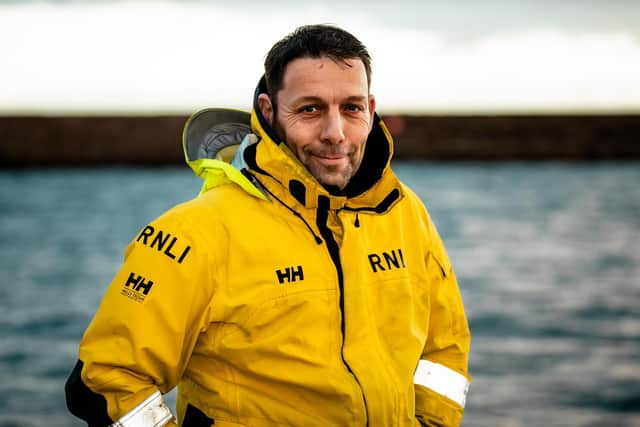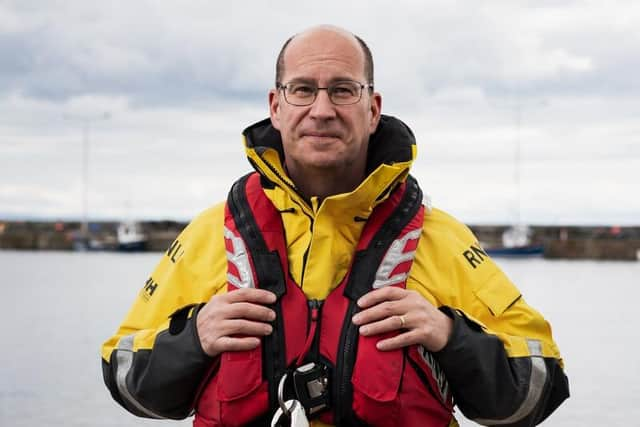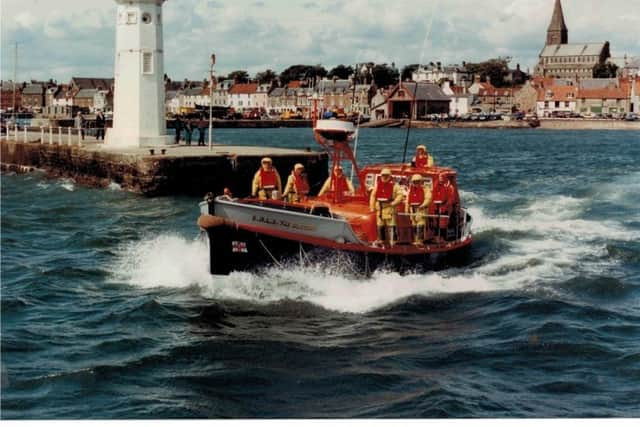RNLI 200: Public support helps Anstruther volunteers save lives at sea
and live on Freeview channel 276
It’s all too easy to forget that the men and women who risk their own lives to save others at sea, whatever the weather, are all volunteers.
However, the role they play in our coastal communities is an incredibly important one.
Advertisement
Hide AdAdvertisement
Hide AdIn Scotland, RNLI lifeboats have launched 45,853 times in the last 200 years, saving 11,878 lives. That means over a quarter (25.9 per cent) of all rescues in Scotland have resulted in a life saved.


While across all of its 238 lifeboat stations around the UK and Ireland, a total of 144,452 lives have been saved by its lifeboats.
The RNLI was founded in a London tavern on March 4, 1824 following an appeal from Sir William Hillary, who lived on the Isle of Man and witnessed many shipwrecks.
Of course there have been huge developments in the lifeboats, kit and technology over the last two centuries, and the RNLI’s lifesaving reach and remit has also developed.
Advertisement
Hide AdAdvertisement
Hide AdHowever, two things have remained the same – the charity’s dependence on volunteers who give their time and commitment to save others, and the voluntary contributions from the public which have funded the service.


Here in Fife volunteer lifeboat crews operate from two stations on the Forth – Anstruther and Kinghorn.
There’s been an RNLI presence in Anstruther since 1865 and it’s just as important today as it was then.
Michael Bruce, Coxswain Mechanic at Anstruther, has been involved with the RNLI for just over 32 years.
Advertisement
Hide AdAdvertisement
Hide AdHe said: “I was brought up in a fishing family so was on a boat from a young age and it was just the next step. My dad was in the RNLI for a short time as a shore helper and it was just something I always wanted to do.


"So much so I used to run out the house as soon as I heard the maroons going off, before the pagers we used to get the big rockets going off, to the disgust of my mum and dad, regardless of what time it was.
"It was like the Bat Signal when I used to hear that and I got in a lot of trouble but it never dissuaded me.
"Once I became of age I officially joined.
"The RNLI is one of these things that once it gets a grip of you that’s it, it’s got you forever. It’s just hugely emotive and it just draws you in.”


Advertisement
Hide AdAdvertisement
Hide AdFellow crewman, Richard ‘Mac’ MacDonald, who has been a volunteer for the last six years having grown up in the East Neuk before being in the US Marines and the RAF Reserves, agrees
He said: “There’s a tremendous sense of achievement when you go out on a shout.
"I guess it goes in stages – you train up, you get on the shouts and it’s all exciting. Then you start getting picked for crews in stormy weather and that hooks you.
"What really comes home is when you go out and you help somebody – you pull someone out the water or you rescue a boat.
Advertisement
Hide AdAdvertisement
Hide Ad“We went out in horrendous conditions to help Kinghorn pull in a yacht that lost all power and there was three people on board and they would never have survived.
"You do something like that, or it can be something like getting someone off the chain walk that’s in a bad condition. We had someone in a coma a few years ago and getting that call from the hospital saying ‘what you did made the difference’ – that just gets you.
"Once you have a couple of those under your belt you just want to be there on that boat to be one of those people that helps and makes a difference.”
The statistics show that crews at Anstruther have launched well over 1000 times and saved 250 lives over the years with on average, one in four rescues from the station a life saved.
Advertisement
Hide AdAdvertisement
Hide AdThe town is currently home to two boats – an All Weather Lifeboat (ALB) which is a Mersey class, and a smaller Inshore Lifeboat (ILB), however in the coming weeks the team will be taking delivery of a brand new Shannon class ALB.
The Shannon has the potential to travel at twice the speed of the current boat and features more modern equipment, as well as improved on board conditions for the crew.
Michael said: “The new tractor and new carriage have arrive already and we’ve started training. With the Shannon we’re moving away from propellers, it uses jets. It’s a lot more agile and it’s got faster acceleration.
"It’s what we’ve all been waiting for for the past eight, nine, ten years. It’s exciting, but it’s a challenging time.”
Advertisement
Hide AdAdvertisement
Hide AdThe team are also building a new, purpose built lifeboat station to the east of their existing location at the harbour which will include an education hub and a larger gift shop. It is hoped work will be able to start later this year. A temporary compound next door to the current station will facilitate what’s needed in the short term to house the new boat.
Mac believes people’s reliance on the RNLI has increased over time and it’s no longer just those in boats that are in need of help.
He said: “In the older days it would have been going out for fishing boats and pleasure boats but nowadays it’s quite funny as you know when the weather is bad it’s not the fishing boats or the pleasure boats because they are not out.
"But you’ve got surfers, kayakers, paddleboarders, kite surfers – they love these conditions. So you’ll be sitting there on a day when you think ‘oh we’re not going out today’ and then the pager goes. It will be a kite surfer that’s been slammed onto the beach or someone’s seen a kayak go out to sea.
Advertisement
Hide AdAdvertisement
Hide Ad"We picked someone off a paddleboard off Kingsbarns – they were basically floating off to Denmark. How they were spied I don’t know.
"There’s this whole other segment of the population now that probably needs us even more as fishermen tend to be able to look after themselves, at least until we get there but if you’re off a paddleboard and you don’t have a lifejacket and you’re wearing black you need help really really fast.
“The ability to get to that person in half the time is going to be such a game changer.”
But there’s a lot more to the RNLI than just the lifeboats, there’s a whole team of volunteers and fundraisers as well as lifeguards on beaches around Fife – and the whole of the UK – during the summer.
Advertisement
Hide AdAdvertisement
Hide Ad“There’s so much more than what people first see,” said Michael. “People often just think it’s a rescue organisation and sometimes they don’t know it’s powered by so many volunteers.”
To find out more about the RNLI and how you can show your support visit www.rnli.org